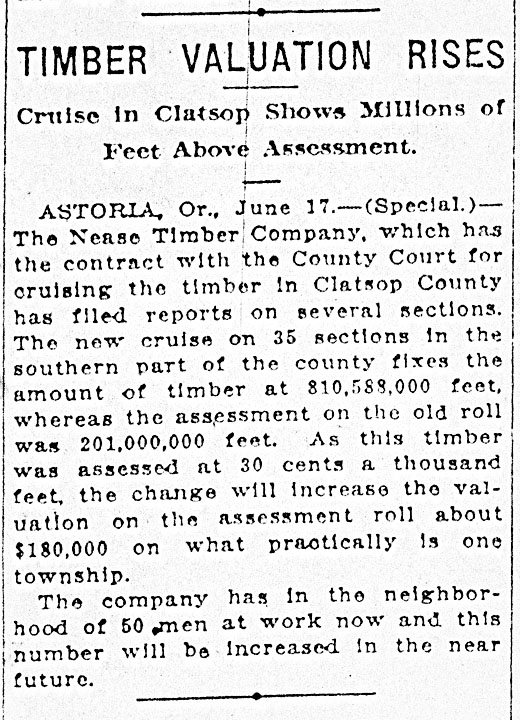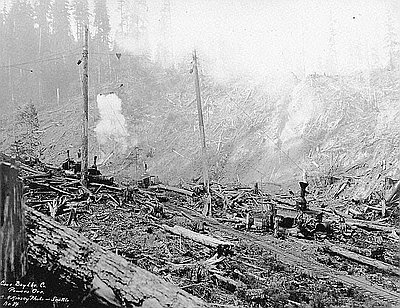This article from the June 18, 1913, Oregonian refers to timber companies and speculators “cruising” forests to assess their value for possible purchase. Timber speculators and their agents visited forests throughout the Pacific Northwest in the late 19th and early 20th centuries. Large timber companies had depleted the once-vast pine forests of the Great Lakes region and were looking for new forests to log. News about the crisis and a public realization that national forests were not inexhaustible combined to drive interest in Pacific Northwest forestlands.
Commercial loggers began harvesting timber from the lower Columbia River region in the late 1880s. Much of the area was accessible by rivers and streams, and workers could easily float felled trees to ports. After the turn of the century, Portland resident and timber investor Simon Benson brought some of the earliest technological advances to logging in the region. To increase the speed of harvesting, he used a donkey engine — a steam-powered machine that hauled logs by cable from up to a mile away. He also built railroads so loggers could access and remove trees that were farther inland. By the turn of the century, the lower Columbia River region was one of the most extensively logged in Oregon.
Further Reading:
Robbins, William G. Landscapes of Promise. Seattle, Wash., 1997.
Robbins, William G. Hard Times in Paradise: Coos Bay, Oregon, 1850-1986. Seattle, Wash., 1988.
Ficken, Robert E. “Gifford Pinchot Men: Pacific Northwest Lumbermen and the Conservation Movement, 1902-1910.” Western Historical Quarterly 13:2, 1982: 165-178.
Written by Kathy Tucker, © Oregon Historical Society, 2002.

